Package Engineering Center
Combining expertise with technology
ISTA certification
Our Package Engineering Center – located in the city of Nagoya, Aichi Prefecture – received ISTA certification in May 2015. We can thus test packaged freight for compliance with ISTA standards and issue official ISTA test results for specific packaging solutions.
ISTA-compliant standards for which testing is offered
1A,1B,1C,1D,1G,1H,2A,2B,2C,3A,3B,3F,
6-AMAZON.com-Over Boxing,
6-AMAZON.com-SIOC Type A,Type B,Type D,
6-Fedex-A,6-SAMSCLUB,7D
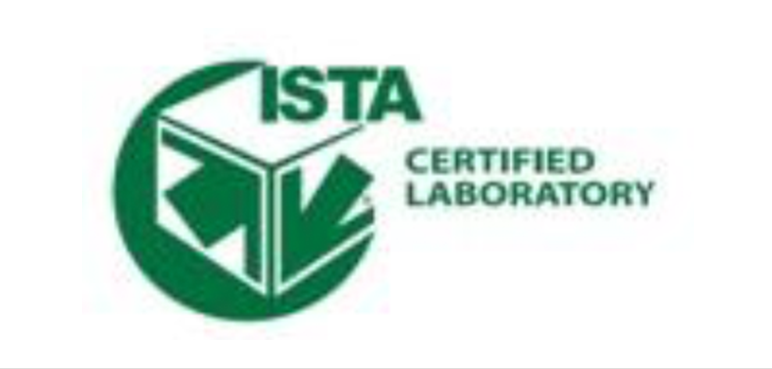
Lab equipment
The equipment available at our Package Engineering Center can handle a wide variety of procedures to meet client requirements.
Freight evaluation
Shock tester, drop type
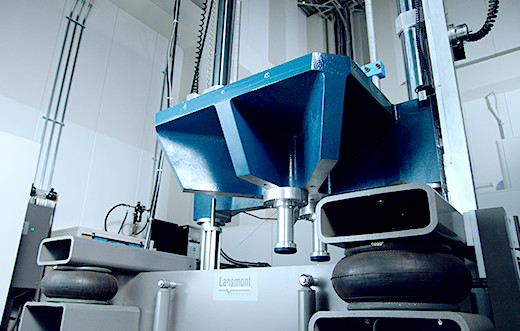
Purpose
To identify external forces that may damage products.
Procedure
- Generate a "damage boundary curve " that draws boundary lines to show where products have been damaged.
- Table dimensions:
- 945 x 1,153 mm
- Maximum sample package weight:
- 454 kg
- Output waveform:
- Sinusoidal, Square
- Testing standards:
- JIS Z 0119, ASTM D 3332
Drop test system
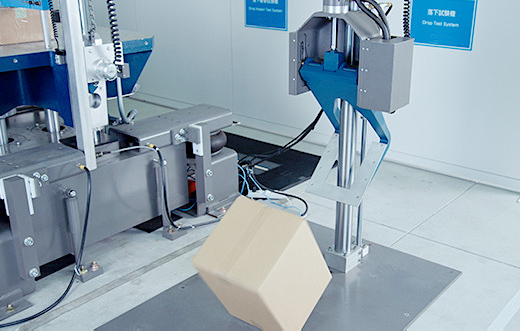
Purpose
Check whether drop impact damages products or causes problem with packages.
Procedure
- To apply drop impact to package freight simulating loading and load shifting during transportation.
- Maximum sample package weight:
- 79 kg
- Maximum depth:
- D910 mm
- Drop height:
- 280 to 1,830 mm
- Vertical drop test system:
- For drop testing large products.
- Testing standards:
- JIS Z 0203, ISO 2248
Vibration test system
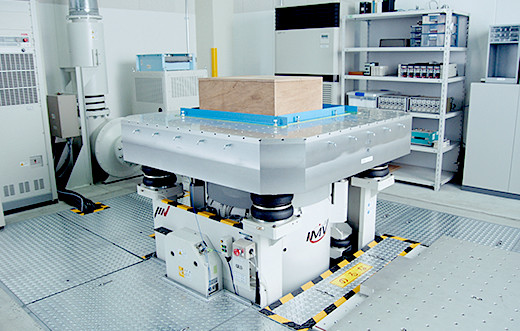
Purpose
Check whether vibration damages or causes fatigue failure in products or causes problems with packaging.
Procedure
- To apply vibration stress encountered by packaged freight in transportation environments.
- Table dimensions:
- 1,500 x 1,500 mm
- Vibration frequency:
- 1 to 2,200 Hz
x / y / z axes
Capable of applying vibration of sinusoidal and random waveforms. - Maximum sample package weight:
- 1,000 kg
- Testing standards:
- JIS Z 0232, ISO 8318・13355
Compression test system
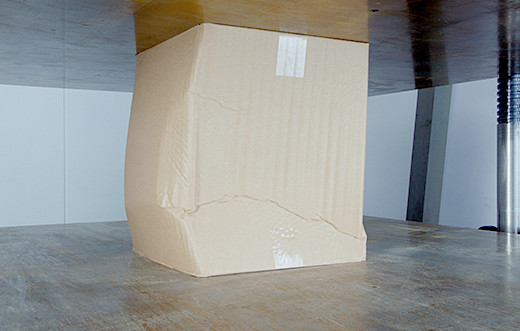
Purpose
To determine the effect on cargo when packaging (container) and/or pallet are subjected to compression, and to facilitate future design that ensures appropriate strength.
Procedures
- Check the compressive strength of corrugated fiberboard, wood and steel containers.
- Check that vertical compressive strength and bending strength of pallets are adequate.
- Table dimensions:
- 1,300 x 1,300 mm
- Maximum height of sample:
- 1,800 mm
- Maximum sample package weight:
- 98 kN
- Testing standards:
- JIS Z 0212, ISO 12048
Material evaluation
Corrugated fiberboard – Bursting tester
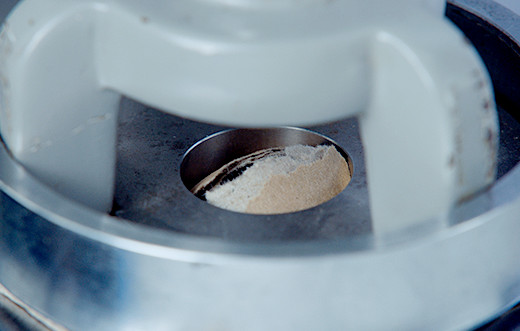
Purpose
To determine the quality of corrugated cardboard and check whether it has sufficient strength.
Procedures
- Check the burst strength of fiberboard – linerboard and corrugating mediums – and corrugated fiberboard.
- Check whether the specified materials have been used to make the cardboard.
- High pressure:
- For linerboard
- Low pressure:
- For corrugating medium
- Testing standards:
- JIS P 8131・P 8112, ISO 2758
Tensile and compression test system
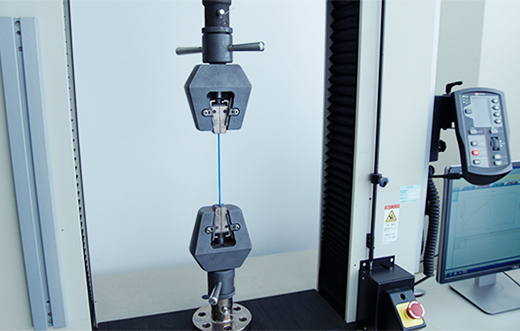
Purpose
To make a comprehensive determination of the strength of packing materials in response to flexing, compression and tension.
Procedures
- Check properties such as bending, compressive and tensile strength unique to the material.
- Check vertical and horizontal compressive strength of corrugated fiberboard.
- Maximum sample package weight:
- 49 kN
- Tests:
- compression test, tensile test
- Controls:
- table speed control, load control
- Testing standards:
- JIS P 8126・P 8113・Z 0401, ISO 1924・1974・3037
Cushioning performance test system
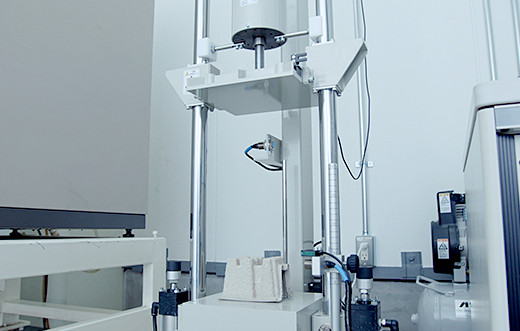
Purpose
To create cushioning design guidelines for packaging materials.
Procedures
- Check the cushioning performance of packaging material.
- Estimate the degree of impact on products based on drop conditions and the status of packaging.
- Drop weight:
- 0.9 to 50 kg
- Static stress:
- 0.5 to 78.5 kPa
- Testing standards:
- JIS Z 0235, ISO 4651
Static electricity test system
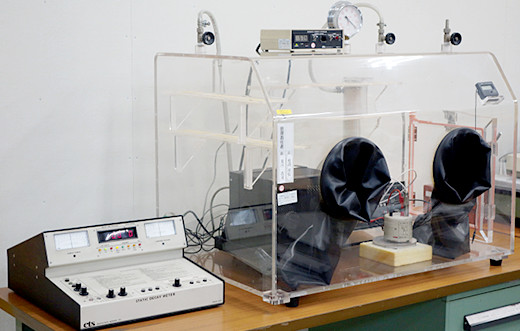
Purpose
To evaluate the electrical performance of packing materials and to put this data to use in finding ways to counter static electricity.
Procedures
- Check electrical properties (electrical conductivity) of material.
- Check whether material is processed to protect against static electricity.
[Volume resistivity test system]
- Applied voltage:
- ±5 kV
[Surface resistivity test system]
- Applied voltage:
- 10, 100, 500 V
- Resistance range:
- 200M to 2T Ω
- Testing standards:
- EIA 541, IEC Pub93, MIL B 81705C
Temperature / humidity testing chamber
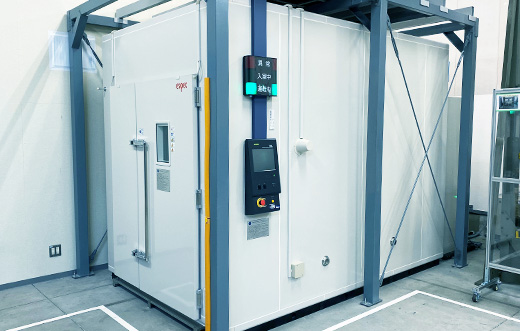
Purpose
To check / evaluate the insulation effectiveness of packing materials in a temperature / humidity-controlled environment.
Procedures
- Reproduce the desired environment (temperature / humidity).
- Keep packing materials under fixed temperature / humidity conditions (equilibrium state) as preparation for other tests.
- Capacity:
- 12,500 ℓ
- Inner dimensions:
- 3,020 x 2,100 x 1,970 mm
- Temperature range:
- -30 to +80 ℃
- Humidity range:
- 10% to 95% RH
- Testing standards:
- JIS Z 0203, ISO 2233
